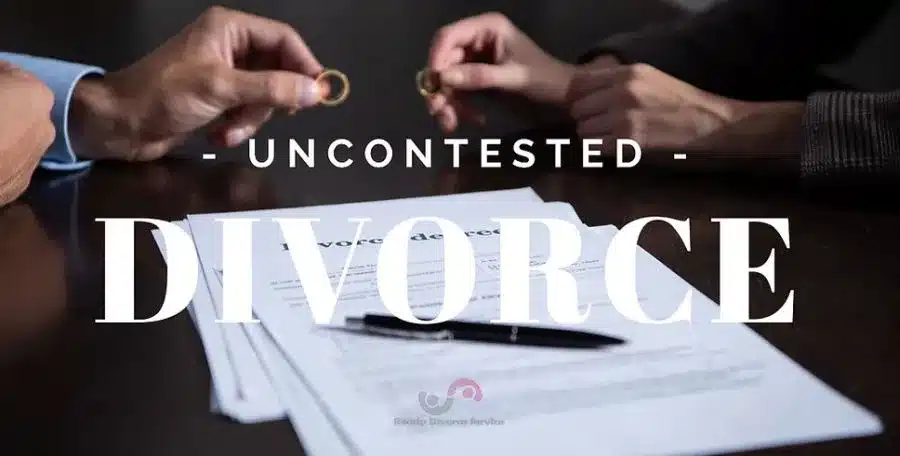Understanding No Fault Divorce & Fault Divorce in Texas
In Tarrant County Texas, there are a few different legal options available to spouses who no longer wish to be married.
When filing for divorce in Tarrant County, individuals can choose between a no fault and a fault-based divorce. Here, we will discuss some of the things you should know about these two options.
What Is the Difference Between Fault and No Fault?
A no-fault divorce is for spouses who are no longer able to get along and live together due to various differences. In a no-fault divorce in Texas, neither party is responsible for the fact that the marriage did not work out. The ground for a no-fault divorce in Texas is dissolution of the marriage based on irreconcilable differences. No fault divorces are the most common type of divorce in Texas.
In this case, the two spouses agree that they do not want to be married anymore and jointly agree to file a no-fault divorce. This formally states that neither party is to blame or guilty of any misconduct that caused the marriage to end.
Texas also has a type of divorce called uncontested divorce. This type of divorce falls into the category of no-fault divorces and allows the couple to create an amicable plan for resolving custody, asset division, and other aspects of their divorce.
For those who do not agree on the separation, it may be necessary to seek a fault-based divorce. In this case, the person filing will allege that their spouse has specifically done something to make the marriage no longer work.
For example, if one spouse cheated, the other spouse can file for divorce on grounds of adultery. If you file for a Texas fault divorce, you will have to prove that your spouse is responsible for the end of your marriage. At-fault divorce in Texas usually takes longer than no-fault divorce because there are more opportunities for disagreement during the case.

Texas Requirements for No Fault Divorce Filings
Since Texas does not require either spouse to prove that someone was at fault before obtaining a divorce, there are few requirements when filing for a no fault divorce in Tarrant County Texas. However, arranging the details of dividing up assets, providing child support, and splitting custody with your spouse can quickly get complicated. At Ready Divorce Service, we will help you throughout the whole process that best suits you and your family.
How to File for No-Fault Divorce
There are several documents that must be prepared to file for a Texas no-fault divorce, including the Original Petition for Divorce. If you have children with your spouse, there are additional documents to complete. These documents relate to custody, visitation rights, and the duties of each parent.
Once your documents are prepared, you will file them at the courthouse in your county of residence. Filing your papers starts the process for your no-fault divorce in Texas. You will pay a fee to file the divorce papers with the court clerk.
If the divorce is not contested, the clerk will schedule a hearing where a judge will review your divorce agreement with your spouse. If it is contested, your spouse will have a certain amount of time to respond to your petition before you proceed further.
Texas Rules About Fault Based Divorces
Though you do not technically need to assign fault in a divorce, it can be helpful if you are the wronged party. In the state of Texas, grounds for a fault based divorce include:
- Adultery
- Abandonment for one year or more
- Abuse of all types
- Domestic violence
- Felony convictions
- Mental incapacitation
- Mental or physically cruel treatment
Once you file for a fault based divorce, you will need to provide evidence in court about the listed fault. A person who can prove their spouse was at fault may receive a higher proportion of the community property when dividing the marital estate. Proving fault can also influence a judge’s decision about custody or alimony.
What to Expect After Filing for Divorce
After you file for divorce, your spouse has a window of time in which to file an answer to your divorce petition. In their answer or counter-petition, your spouse may set forth the divorce terms that they think are most desirable. If your spouse does not file an answer by the Monday next following 20 days from the date of being served with divorce papers, they may lose their right to make arguments for their preferred divorce terms, including property division and spousal support.
It is common for many couples to engage in mediation after the responding spouse files an answer. During mediation, a neutral third party will try to help you and your spouse to figure out terms to which you both agree. Mediation can help both spouses come out of the divorce feeling satisfied, which can help you to have an amicable relationship in the future. Staying on civil terms with your former spouse is often beneficial to any children of the marriage.
Discovery can include valuations of assets owned by your spouse, gathering evidence of an affair, and more. Once all the divorce issues are resolved, the court will sign the final divorce decree. This decree finalizes your divorce.







Comments are closed.